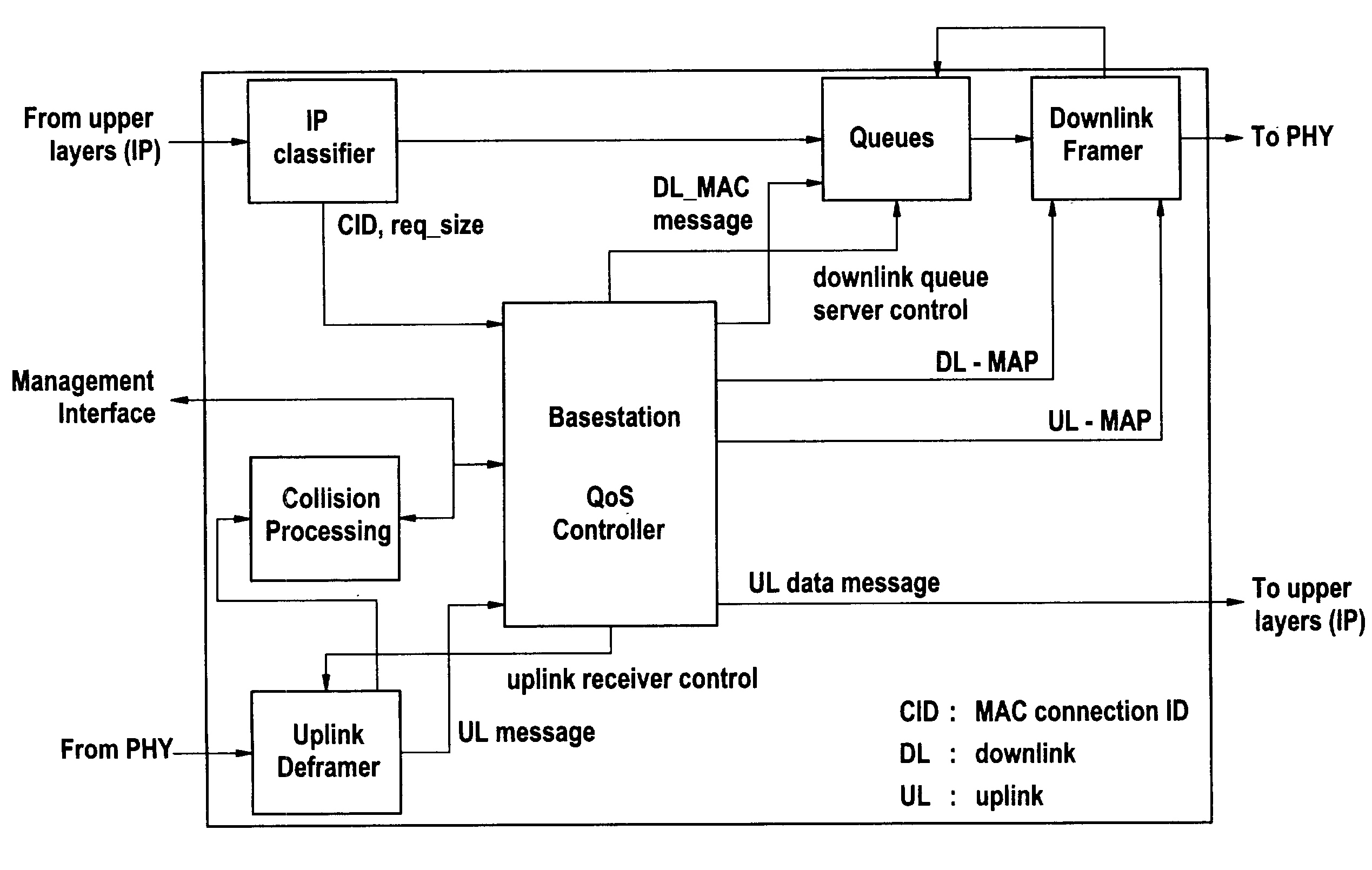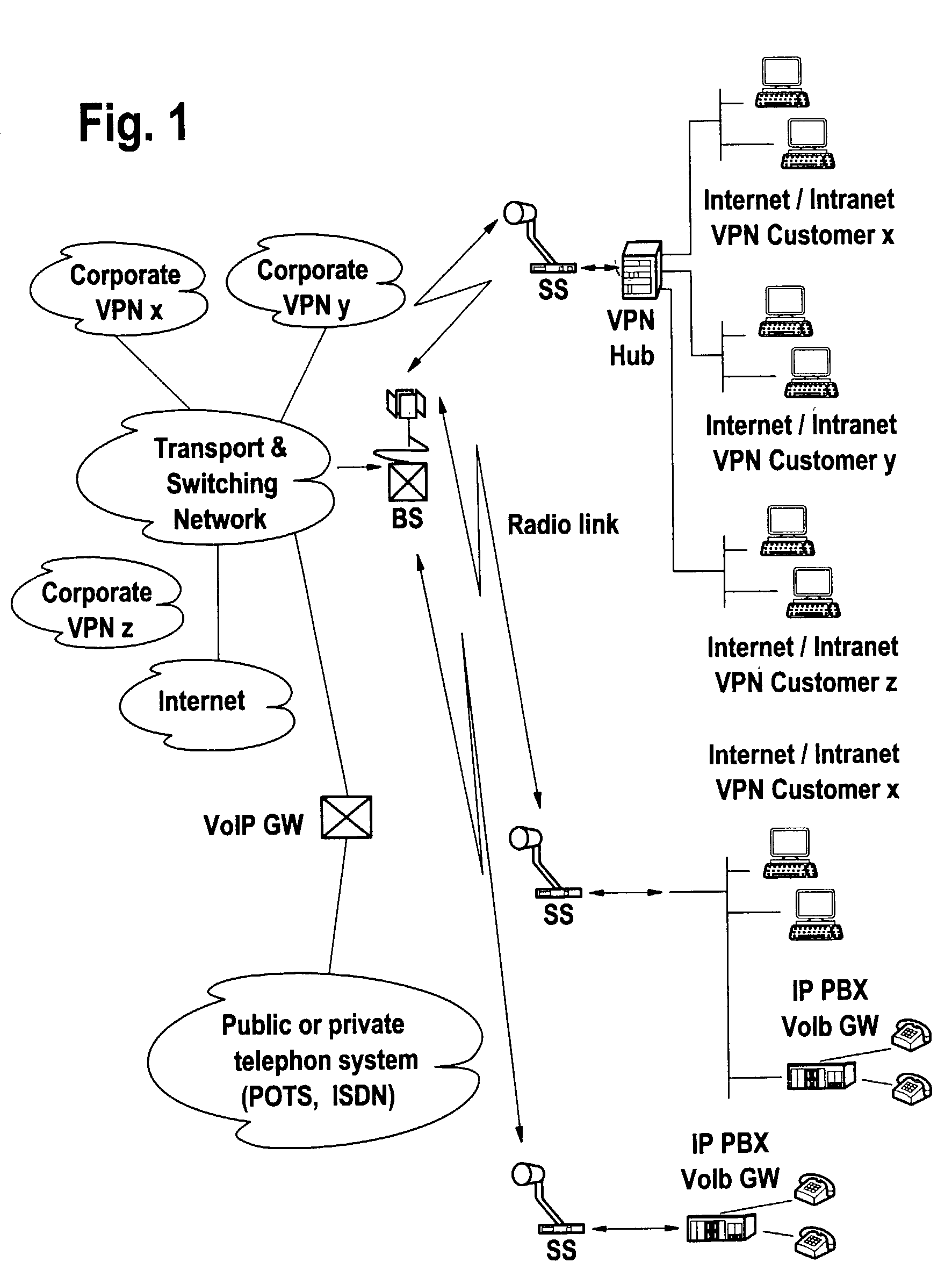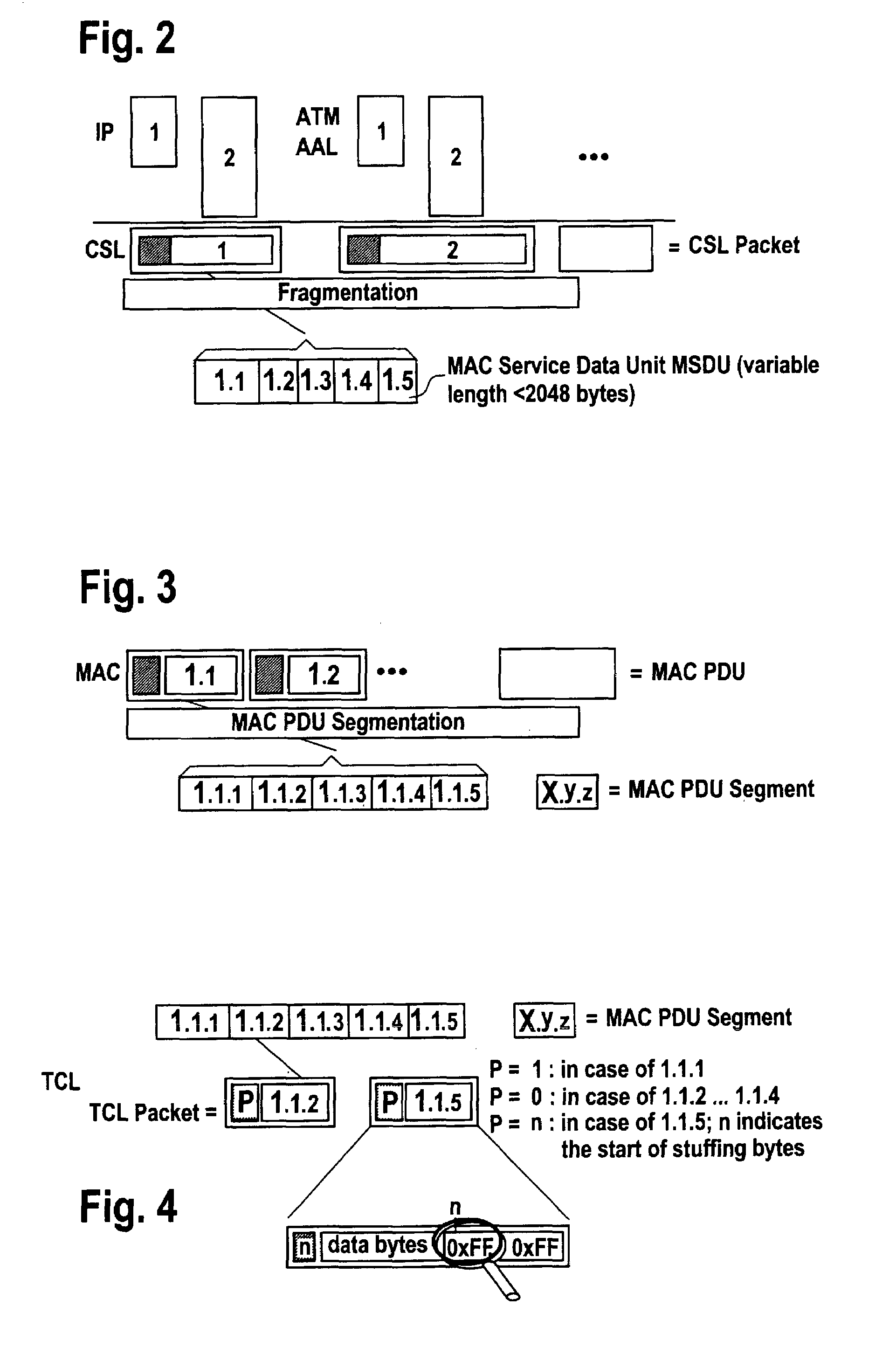IP platform for advanced multipoint access systems
a multipoint access system and advanced technology, applied in the field of advanced multipoint access systems, can solve the problems that the framer and the qos cannot perform service priority respecting traffic shaping, and neither the qos queuing knows anything about the actual available downlink bandwidth or data rate, so as to achieve the effect of reducing the amount of memory spa
- Summary
- Abstract
- Description
- Claims
- Application Information
AI Technical Summary
Benefits of technology
Problems solved by technology
Method used
Image
Examples
Embodiment Construction
[0035]The following describes the functions required within an IP based Local Multipoint Distribution Service (LMDS) System (including Base Station and Subscriber Stations) to provide QoS in this fixed broadband wireless access network. It has been supposed that the Differentiated Service Architecture will be applied. The specified functions are structured according to the layering in the network layering model and also according to their location. The described functions encompass also multi-provider and multi-subscriber environment with different Service Level Agreements. The following further describes the required functions of an (IP) packet based LMDS system. The focus within this document is on the MAC and (IP) network layer functions which assure Quality of Service (QoS) for legacy and QoS aware applications. Hereby, the Differentiated Service Architecture is applied to add QoS features. The alternative Integrated Service Architecture was not taken into account due to the maj...
PUM
 Login to View More
Login to View More Abstract
Description
Claims
Application Information
 Login to View More
Login to View More - R&D
- Intellectual Property
- Life Sciences
- Materials
- Tech Scout
- Unparalleled Data Quality
- Higher Quality Content
- 60% Fewer Hallucinations
Browse by: Latest US Patents, China's latest patents, Technical Efficacy Thesaurus, Application Domain, Technology Topic, Popular Technical Reports.
© 2025 PatSnap. All rights reserved.Legal|Privacy policy|Modern Slavery Act Transparency Statement|Sitemap|About US| Contact US: help@patsnap.com



